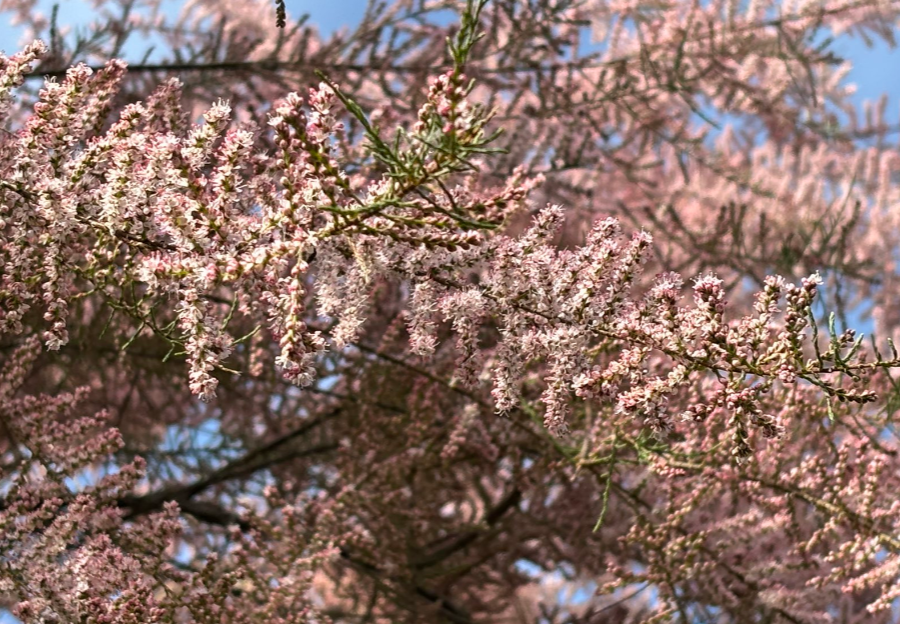In the global market, plant extracts have become a key focus for cosmetic innovation due to their natural and healthy advantages. Data indicates that the global plant extract market is expected to reach $64.6 billion by 2028, demonstrating strong growth potential.
Additionally, consumer preference for natural ingredients has driven the evolution of plant extracts from traditional concepts to scientifically validated functional raw materials (e.g., supercritical CO2 extraction, microwave extraction, and enzymatic hydrolysis). Data shows that over 3,400 plant species in China are used as cosmetic raw materials, accounting for more than one-third of the nearly 9,000 ingredients listed in the Inventory of Existing Cosmetic Ingredients in China (2021 Edition).
By 2025, the economic value of synthetic biology and biomanufacturing is projected to reach $100 billion. In the future, gene editing and synthetic biology will enable scientists to develop more rare active ingredients (e.g., flavonoids, polyphenols, terpenoids, and volatile oils), serving as a breakthrough for green technology.
This article compiles the latest and less commonly used plant extract ingredients with high potential in the cosmetics market, providing insights for market foresight.
No. 1: Tamarix Flower/Leaf Extract
Tamarix flower/leaf extract contains a wealth of natural active components. Scientists have identified components such as Tamarix phenol, Tamarix ketone, Tamarixanol, β-Sitosterol, Daucoside, 3’,4’-Dimethylquercetin, and Stearic acid.
| Component Category | Main Components | Effects | Cosmetic Applications |
| Polyphenols | 3’,4’-Dimethylquercetin, Tamarix phenol | Antioxidant, Anti-inflammatory | – Anti-aging products: Reduces fine lines, pigmentation – Soothing products: Alleviates redness, sensitivity |
| Sterols | β-Sitosterol | Anti-inflammatory, Moisturizing, Skin conditioning | – Moisturizing creams, lotions – Sensitive skin repair products |
| Volatile Compounds | Tamarix ketone, Tamarix alcohol | Antibacterial | – Anti-acne products: Reduces Propionibacterium acnes inflammation – Natural preservative alternative |
| Carotenoids | Daucoside | Antioxidant, Photoprotection | – Sunscreen, anti-aging products |
| Fatty Acids | Stearic acid | Moisturizing, Emollient | – Creams, lotions: Improves skin texture |
International Cosmetic Cases Containing Tamarix Flower/Leaf Extract
As of June 8, 2025, there are 74 cosmetic products globally containing Tamarix flower/leaf extract, with the highest adoption in Japan and China.
Shiseido Ginza Series: Contains low concentrations of Tamarix flower/leaf extract, primarily used as a moisturizer and skin conditioner.
Japanese Quasi-Drug Products: 50% ethanol-extracted Tamarix flower/leaf extract is approved as a quasi-drug cosmetic additive under Japan’s Pharmaceutical Affairs Law, used by brands such as Kose and Kao.
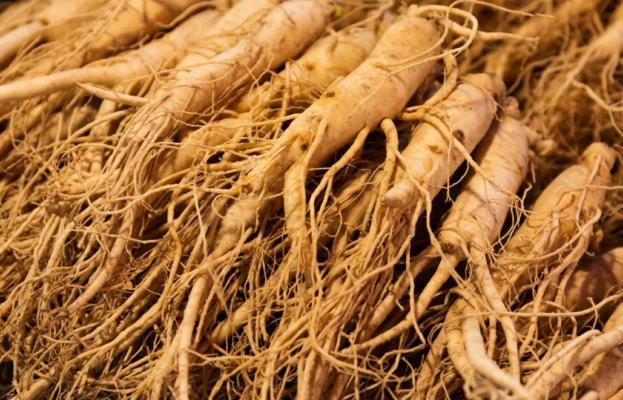
No. 2: Ginseng Root Oil
Ginseng root oil, extracted from ginseng roots, has complex components with multiple bioactivities, including anti-inflammatory, antibacterial, blood circulation promotion, and skin barrier repair effects.
A 2018 study confirmed that red ginseng oil’s antibacterial effect against Propionibacterium acnes surpasses some chemical ingredients. A 2020 study showed that red ginseng oil inhibits MMP activity, protecting collagen and reducing wrinkles.
| Component Category | Main Components | Effects | Cosmetic Applications |
| Volatile Terpenes | α-Humulene, β-Patchoulene, Trans-Caryophyllene, Humulene | Anti-inflammatory | – Soothing products for sensitive skin – Anti-acne products to reduce redness and inflammation – Repair creams and serums |
| Volatile Terpenes | Trans-Caryophyllene, Humulene | Antibacterial | – Anti-acne products (cleansers, serums) – Natural preservative alternative |
| Fatty Acids | Stearic Acid, Other Liposoluble Components | Moisturizing, Skin Barrier Repair | – Moisturizing creams and lotions – Repair products for dry or damaged skin |
| Vitamins & Minerals | Trace Vitamins, Minerals | Sebum Regulation, Skin Conditioning | – Products for oily or combination skin – Skin texture-improving serums |
| Other Components | Liposoluble Actives | Improves Blood Circulation | – Anti-aging products to enhance skin vitality – Scalp treatments for hair growth |
International Cosmetic Cases Containing Ginseng Root Oil
As of June 8, 2025, there are only 9 cosmetic products globally containing ginseng root oil, indicating early-stage application but significant growth potential.
MEDIK8 (acquired by L’Oréal): Products contain ginseng root oil as a moisturizer, skin conditioner, and anti-inflammatory agent.
Sulwhasoo: Some products (e.g., Concentrated Ginseng Rejuvenating Serum) contain ginseng root oil-related extracts, emphasizing anti-aging benefits.
Beauty of Joseon: Products like Ginseng Essence Water (with 80% ginseng root water) may include trace ginseng root oil, offering moisturizing, brightening, and oil-control effects.
Augustinus Bader: The Face Cream Mask contains ginseng extracts, with clinical trials showing reduced fine lines and improved skin hydration.
Clarins: Uses organic red ginseng extract, highlighting anti-aging and skin vitality.
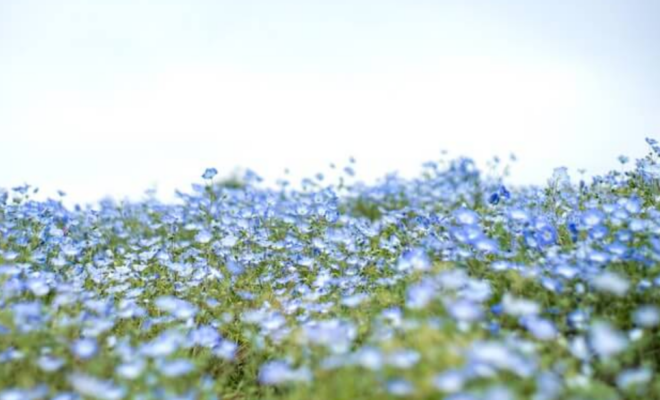
No. 3: Flax Flower Extract
Rich in α-Linolenic Acid (ALA), an omega-3 polyunsaturated fatty acid, flax flower extract exhibits high antioxidant activity, as confirmed by DPPH tests for its flavonoids and phenolic acids.
| Ingredient | Main Components | Effects | Cosmetic Applications |
| Tamarix Flower/Leaf Extract | -Polyphenols: 3’,4’-Dimethylquercetin, Tamarix phenol -Sterols: β-Sitosterol -Volatile Compounds: Tamarix ketone, Tamarix alcohol -Carotenoids: Daucoside -Fatty Acids: Stearic acid | – Antioxidant – Anti-inflammatory – Antibacterial – Moisturizing – Skin conditioning – Photoprotection | – Anti-aging products: Reduces fine lines, pigmentation – Sensitive skin products: Soothes redness, irritation – Anti-acne products: Reduces bacterial inflammation – Moisturizing creams/lotions: Enhances skin barrier – Sunscreen products |
| Ginseng Root Oil | -Volatile Terpenes: α-Humulene, β-Patchoulene, Trans-Caryophyllene, Humulene -Fatty Acids: Stearic acid, other liposoluble components -Vitamins & Minerals: Trace amounts | – Anti-inflammatory – Antibacterial – Moisturizing – Skin barrier repair – Sebum regulation – Improves blood circulation | – Anti-acne products: Reduces P. acnes inflammation – Moisturizing creams/serums: Enhances hydration – Anti-aging products: Reduces wrinkles, improves elasticity – Scalp treatments: Promotes hair growth – Sebum-regulating products for oily skin |
| Flax Flower Extract | Omega-3 Fatty Acid: α-Linolenic Acid (ALA, ~53%) Flavonoids: Quercetin Phenolic Acids: Caffeic acid Lignans: Secoisolariciresinol Diglucoside (SDG) | – Antioxidant – Anti-inflammatory – Sebum regulation – Cell repair – Moisturizing | – Anti-aging products: Reduces wrinkles, improves firmness – Moisturizing lotions: Enhances hydration, reduces TEWL – Sebum-regulating products: Balances oily skin – Wound-healing creams: Promotes cell repair – Sensitive skin products: Reduces inflammation |
Cosmetic Cases Containing Flax Flower Extract
As of June 8, 2025, there are 9 products containing flax flower extract, with limited use but substantial potential.
L’Oréal Paris Extraordinary Series and Nourishing Oil Series: Contain flax flower extract as a moisturizer, antioxidant, and skin conditioner.
The Body Shop: Likely used in the Hemp series, suitable for dry or sensitive skin.
No. 4: Boswellia Serrata Water
The core components of Boswellia serrata water include Naringin, flavonoid compounds, pectin, polysaccharides, and limonoids, acting as potent antioxidants to inhibit lipid peroxidation, while also offering anti-inflammatory and soothing properties for sensitive skin.
Aveda (Estée Lauder): Used in products like Aveda Outer Peace™ Acne Relief Pads or Pure-Formance Conditioner, incorporating Boswellia serrata water-related extracts.
Drunk Elephant (Shiseido): Likely included in Virgin Marula Luxury Facial Oil, leveraging its anti-inflammatory and antioxidant properties.
L’Occitane: Possibly used in Shea Butter Ultra Rich Body Cream.
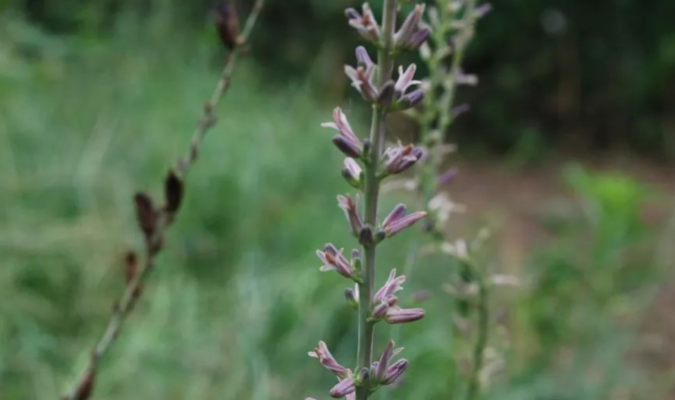
No. 5: Anemarrhena Asphodeloides Leaf Extract
The core components of Anemarrhena asphodeloides leaf extract include polysaccharides and polyphenolic compounds. Polysaccharides enhance skin barrier function, and polyphenols provide strong antioxidant activity, alleviating redness in sensitive skin. The highest usage is 0.3% (leave-on products), safe at low concentrations, and suitable for sensitive skin formulations.Cosmetic Cases Containing Anemarrhena Asphodeloides Leaf Extract
As of June 8, 2025, there are 49 cosmetic products globally containing Anemarrhena asphodeloides leaf extract, indicating a promising market presence.
Clarins Body Fit Anti-Cellulite Contouring Expert: Contains Anemarrhena asphodeloides extract as a moisturizer, skin conditioner, and antioxidant.
AHC (Unilever): Likely used in Hydra Soother Mask, leveraging its moisturizing and anti-inflammatory properties.
Drunk Elephant: Possibly included in Virgin Marula Luxury Facial Oil, suitable for sensitive skin.
No. 6: Ampelopsis Grossedentata Leaf Extract
Ampelopsis grossedentata leaf extract contains high flavonoid content (43.4%-45.5%), including key components such as Quercetin, Ampelopsin (Dihydromyricetin), Kaempferol, polyphenols, triterpenoids, and organic acids.
Cosmetic Cases Containing Ampelopsis Grossedentata Leaf Extract
Sulwhasoo (South Korea): Likely used in products like Concentrated Ginseng Renewing Cream, leveraging its high flavonoid content for anti-aging and soothing effects.
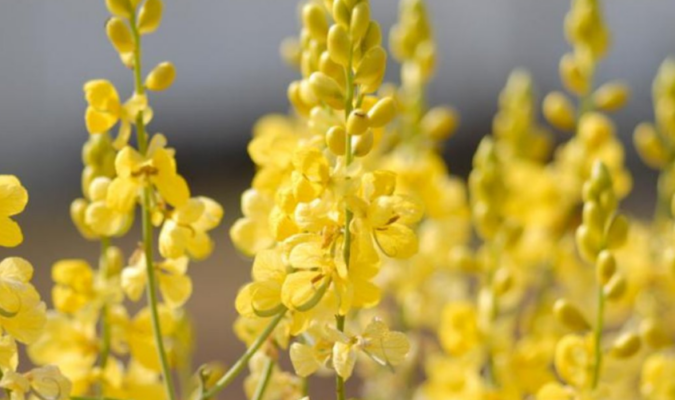
NO.7 Senna angustifolia Seed Polysaccharide
The hydroxyl groups in Senna angustifolia seed polysaccharide can absorb moisture and form a breathable moisturizing film, achieving 24-hour long-acting hydration to improve dry and rough skin. Experimental data shows that at the same effective concentration, its 6-hour moisturizing effect exceeds that of hyaluronic acid.
In addition, the seed polysaccharide in Senna leaf extract can enhance radiance by regulating cortisol and promoting β-endorphin release. Another major advantage: this ingredient has a safety risk coefficient of Grade 1, is non-comedogenic, and is suitable for sensitive skin.
As of June 8, 2025, there are 760 global products containing this ingredient, covering multiple categories such as skincare, hand creams, and essences. In the future, this ingredient has the potential to be widely used in specialized products for eczema and redness, or compounded with vitamin E and tea polyphenols to form a synergistic anti-aging system. Professionals claim it is expected to become one of the core raw materials replacing hyaluronic acid in the future.
Cosmetics Using Senna angustifolia Seed Polysaccharide
As of June 2025, brands such as Pechoin, Sephora, and Mentholatum have used this ingredient in their products, such as Pechoin’s Initial Power Rejuvenating Series.
1. Jurlique’s Rare Rose Hydrating Series adds this ingredient, combined with “Smart Sustained-Release Technology,” to significantly enhance the moisturizing barrier function.
2. Kosmea compounds it with rosehip oil to enhance moisturizing and anti-inflammatory functions.
3. Mentholatum’s Double-Effect Radiance Hand Cream adds this ingredient to gently improve skin luminosity.
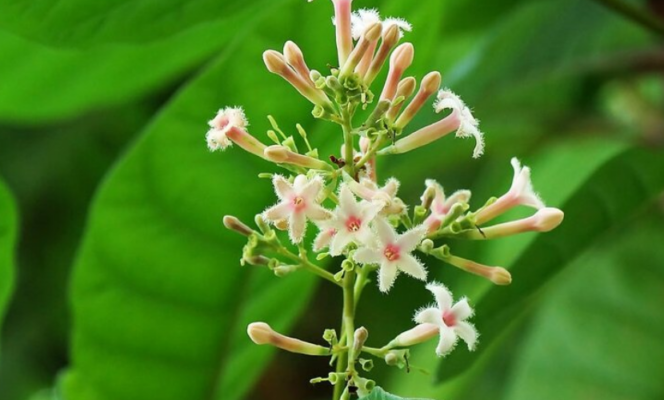
NO.8 Cinchona Bark Extract
Alkaloids such as quinine and quinidine in Cinchona bark extract have significant anti-inflammatory activity, among which quinine can even activate hair follicles and inhibit hair loss. Polyphenols in the extract have a dual regulatory effect on melanin production: high concentration (>0.04mg/ml) reduces melanin synthesis.
Patent studies show that 5-hydroxytryptophan (5-HTP) in the extract of *Cinchona* (genus) seeds can reduce melanin production to 80%-93% of the control group (p<0.01), which is strong evidence of its ability to promote skin whitening.
The European Union’s Scientific Committee on Consumer Safety (SCCS) assesses that Cinchona bark extract has no significant toxicity at a maximum concentration of 2% in leave-on products, but pesticide residues need to be controlled. China’s *List of Used Cosmetic Ingredients* stipulates a maximum usage of 50% for rinse-off products and 2% for leave-on products, and local tolerance testing is required.
In the future, Cinchona bark extract can be used in specialized products for rosacea and eczema. If compounded with salicylic acid and ketoconazole, it can be used to develop anti-dandruff and anti-hair loss 2-in-1 shampoos.
Cosmetics Using Cinchona Bark Extract
1. French brand PHYTO’s anti-hair loss shampoo adds this ingredient to relieve scalp itching and improve seborrheic dermatitis symptoms through its local anesthetic properties.
2. Klorane’s Cinchona Anti-Hair Loss Essence compounds high-purity quinine with caffeine to reduce hair loss in patients. (Its Cinchona series has annual sales exceeding 120 million euros, accounting for 18% of the European anti-hair loss market.)
3. PHYTO’s anti-hair loss shampoo contains high-concentration Cinchona bark extract, which benefits inflammatory scalp hair loss.
4. Dr.Jart+ Silver Label BB Cream contains this extract, which can significantly relieve redness in sensitive skin and regulate uneven skin tone, selling over 500,000 units in South Korea within the first year of launch.
5. Japan’s Shirowamiya Pore Countermeasure Lotion adds this ingredient to improve enlarged pores and rough skin.
NO.9 Tamarind Extract
The core components of tamarind extract include flavonoids, organic acids, polyphenols, and various nutrients. Among them, flavonoids can scavenge free radicals and inhibit lipid peroxidation (experiments show that its proanthocyanidins have 50 times the free radical scavenging capacity of vitamin E and 20 times that of vitamin C).
In addition, the extract is rich in citric acid, malic acid, and tartaric acid, which can promote epidermal renewal to achieve the effects of removing blackheads and astringing pores. Overall, tamarind extract has comprehensive skincare value such as antioxidant,角质 management (keratin management), and anti-inflammatory effects through the synergy of multiple components. Tamarind extract has a safety risk coefficient of Grade 1 (lowest risk), is non-comedogenic, and is suitable for sensitive skin.
The EU SCCS assesses that there is no significant toxicity at a maximum concentration of 1.5% in leave-on products, but pesticide residues need to be controlled. China’s *List of Used Cosmetic Ingredients* stipulates a maximum usage of 1.5% for leave-on products.
Now, the tamarind polysaccharide production line developed by the University of Shanghai for Science and Technology improves extraction efficiency through supercritical CO₂ extraction technology, which will further reduce production costs and facilitate the popularization of this ingredient.
It is expected that from 2025 to 2030, the Chinese market size of this ingredient will grow at an average annual rate of 8.9%. In the future, this ingredient will be more widely used in specialized products for rosacea and eczema, such as Avene’s planned soothing essence containing tamarind extract to be launched in 2026.
Cosmetics Using Tamarind Extract
1. French brand Kosmea compounds it with rosehip oil to enhance antioxidant capacity and support anti-aging effects.
2. ZXY Tamarind Lifting Mask compounds tamarind extract with Brazilian pectin and Xinjiang black honey to improve T-zone oil secretion and pore dilation.
3. Bioderma Sensibio H2O adds tamarind extract to gently reduce redness in sensitive skin.
4. The core ingredient of Clarins’ Hydra-Essentiel Series is tamarind extract, which, combined with “Spring Water Technology,” clinically shows increased skin elasticity after use.
5. Mentholatum’s Double-Effect Radiance Hand Cream contains tamarind extract, synergizing with shea butter to enhance skin luminosity.
6. Tamarind Shell Hand Cream contains ethanol extract of tamarind shell, which can improve hand roughness.
NO.10 Vietnamese Benzoin Resin Extract
The main components of Vietnamese benzoin resin extract are resin acids, aromatic acids, and terpenoids. For example, sumatrol and thailandic acid have antibacterial and anti-inflammatory properties and emit characteristic aromas, making them suitable for applications in creams, lotions, and shampoos.
Its resin acids and vanillin components can relieve redness and sensitivity; terpenoids such as coniferaldehyde can delay skin oxidative damage, and it will be more widely used in anti-allergy repair masks, post-sun repair creams, anti-aging essences, and other products in the future. As of June 2025, there are 135 products containing this ingredient, covering skincare, haircare, and color cosmetics fields.
Cosmetics Using Vietnamese Benzoin Resin Extract
1. Caudalie’s Classic Grape Active Essence Toner uses benzoin extract, paired with grape polyphenols, to create a toner system of “natural preservation + soothing conditioning.”
2. American organic brand Herbal Essences may add natural resin ingredients in shampoo formulas to regulate fragrance.
Leecosmetic: Using raw materials from internationally renowned companies
Leecosmetic is a leading cosmetics manufacturer. It provides high – quality cosmetics products at very competitive prices and with low minimum order quantities.
We offer a range of services, such as private label cosmetics manufacturing, OEM/ODM manufacturing, and provide a complete product supply solution for small and medium – sized cosmetics brands.
As a fast – growing private label cosmetics manufacturer, Leecosmetic has been using raw materials from internationally renowned companies in a safe and efficient manner.
Contact: https://leecosmetic.com/contactus/c
